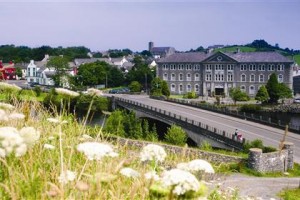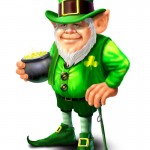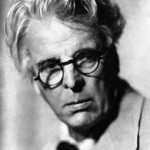I’m on a heckuva roll: it was another St. Patrick’s Day without green beer for this might’ve been an Irishman. Most Howdens appear to come from the north of England – not far from York, there is a village called Howden, which has a miniature, half-ruined, poor Gothic cousin to the magnificent York Minster Cathedral. My Howden forebear, though, came to Canada from County Fermanagh in Northern Ireland.
My preferred fantasy is that this Howden man was a poor, dashing poet like the central character in Thomas Flanagan’s novel The Year of the French, an adventurous soul who set out for Canada spurred not only by famine but by his lusty curiosity and spirit of adventure. In my dim family memory bank, he was also a James, and I’m reluctant to puncture this thought with actual research. I rather suspect, too, that he was a comfortable man who saw a chance for cheap land in Upper Canada, now the narrow wedge of Americanized soil called Southern Ontario. Still, for reasons mainly mysterious, I have a special affection for things Irish, though I’ve never been there. Two of my sons have it, too, even more strongly than me: one of them is a real scholar of Irish history, and couch-surfed there for several months.
Here in Dalian, our Chinese students have an idea of Western holidays that is even blurrier than most kids back home. Christmas is called Sheng Dan (“holy birth”), but the main reference is cardboard Santa Clauses on shop windows. Easter is becoming a marketing opportunity for the growing Chinese taste for sweets; their children will
someday, I fear, be as confused as are Canadian kiddies about rabbits laying sugar-soaked eggs. Of course, St. Paddy’s is known – surprise! – as a time when Americans wear green, have parades and get really hammered. (Oh, and something about rainbows and pots of gold and deformed little dudes with eccentric beards. My friend Xiaoqiang, a hoops nut, immediately thought Boston Celtics.)
This year was slightly different for us, as it may be the first time we’ve seen the approach of another March 17 with our new colleague Kylie, a genuinely Irish, genuinely and sincerely Catholic young woman whose disgust at the (mainly) North American corruption of an Irish saint’s birthday outweighs my own by an invigorating margin. Even for a guy who doesn’t wear “Kiss Me, I’m Irish” t-shirts at beer-soaked debauches – or who cringes at the hideously kitschy green uniforms uniforms worn last weekend by the young, substantially African-American basketball players toiling for the “Fighting Irish” of Notre Dame University — it was still a good day to feel Kylie’s weary indignation, and be just a little embarrassed at being so Canadian, eh?
I should’ve read some Yeats. I did make a wee effort to know a bit more about Patrick. It’s a story shrouded in mythology and doubt, but what is known is that by the seventh and eighth centuries of the Christian era, a few hundred years after the Christianizing of Ireland by Patrick and his followers, the Emerald Isle was a leading light of culture and civilization in Europe. That’s a heritage. And the banishing of snakes from Ireland, let alone leprechauns or the conspicuous consumption of suds, doesn’t enter into the generally accepted history at all, at all.



